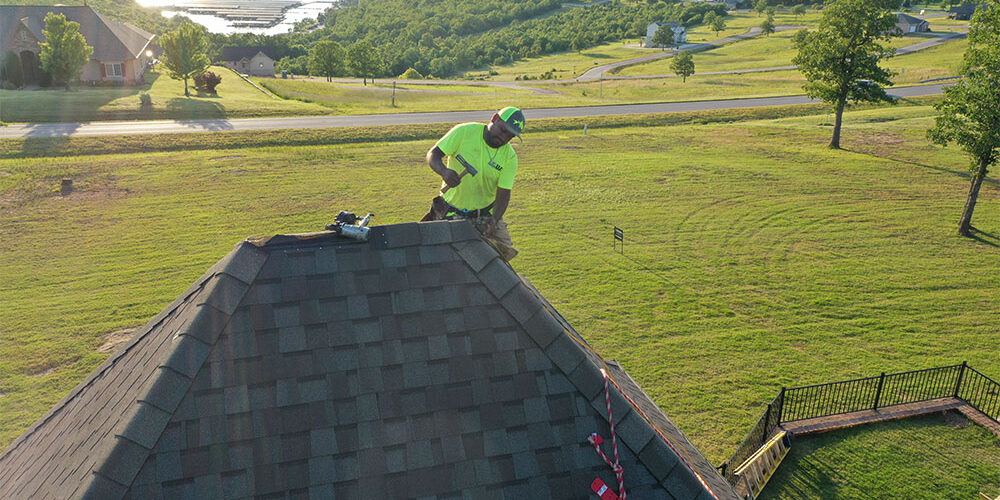This article is simply meant to help you navigate the care of your roof over your lifetime and the most cost effective strategies to maintain a high quality roof on your house. This is my opinion based off of how I maintain my own roof on my own house having years of insurance roof replacements under my belt. It’s also intended to help you navigate the thought process of when it is right to replace your roof.
Please understand that I wouldn’t consider you incorrect if you disagree with me on some of this, but I will share what I believe to be best practices and have seen to be the most cost effective in caring for your roof over the years.
When my customer is asking me whether their old roof (that also has no leaks yet) should be replaced or not, I like to share an analogy with them. I ask them if it makes the most sense to replace the tires on your vehicle after you have a blowout, so that you know you have gotten the most possible miles out of your tires or would it be more appropriate to be more proactive and replace them when there is a minimal amount of tread left? The point is that the answer is different for different people. Some may be willing to risk having to put a spare on in the case of a blowout. Some would take the safer option and would rather be guaranteed not to have a blowout by replacing all of their tires even though they aren’t having any issues yet. Of course I would like to replace your roof for you sooner rather than later, but if you would prefer to put your spare tire to use before you buy new tires, then it may not make sense to replace your roof until it actually fails.
These are the 5 most important things to consider in order to have the highest quality roof for the least amount of money:
Use insurance dollars to replace your roof. This is what insurance is for and you’re paying a significant amount of money every month to the insurance carrier. They aren’t always easy to work with on the claims, but a good roofer can help you navigate the claim process. This way you can be sure to get the highest quality roof when it needs to be replaced and even some upgrades to your roof may be available. Long story short, you want to use the dollars you’re already paying to your insurance provider to replace your roof rather than pulling additional funds out of your own pocket.
Use a high quality heavyweight shingle, but not a class IV impact resistant shingle. I’ve seen some class IV shingles absorb more damage in heavy winds, but more importantly the class IV can be tempting because it can get you a discount on your insurance. I often price it out for my customer so they can consider how many years it would take to recoup the extra dollars required to install class IV. It’s almost always cost prohibitive. But the most important factor is that it greatly reduces the likelihood that insurance will ever pay for your roof ever again. Since the goal is to get insurance to pay for your roof, I can’t in good faith recommend class IV shingles.
Have a roofer monitor your property for hail damage. Good roofers have software that will monitor your address specifically for hail damage that will likely qualify you for a new roof through your provider and ask your roofer to contact you for an inspection when they are notified of the weather event.
Be flexible on timing. You never know when a good hail storm will come through. I know it will come but I don’t know if it will be when your roof is 5 years old or when it is 20 years old. Be flexible enough and willing to get it replaced when the opportunity arrises. I’ve seen customers miss out on new roofs and eventually have to pay out of pocket because they felt like their roof was too young when the opportunity showed itself. Be willing to file a claim even if your 30 year roof is only 10 years old.
Plan on paying your deductible. Insurance law says you have to pay it for starters, but furthermore if a contractor is offering to cover your deductible for you, there’s some shady business going down. I wouldn’t want someone willing to commit insurance fraud that will likely lose their license soon to replace my roof. Know what your deductible is and have it saved. Life happens though and deductibles are still a lot to have saved. A lot of our customers use our in-house payment plan to pay their deductible. With that, you’ll have legal proof that you paid your deductible and also have a $0 out of pocket expense and up to 100 months to pay your deductible back.








Great article! I really appreciate the clear and detailed insights you’ve provided on this topic. It’s always refreshing to read content that breaks things down so well, making it easy for readers to grasp even complex ideas. I also found the practical tips you’ve shared to be very helpful. Looking forward to more informative posts like this! Keep up the good work!